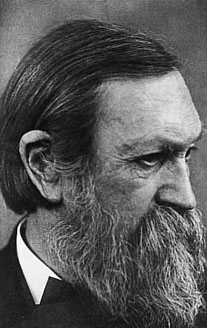
In the Analysis of Sensations, Ernst Mach attempted to categorize elements into three groups: A B C as the independent objects of the world, K L M as one’s own body, and a b c as the contents of one’s own mind. It seemed trivial to extend this chain of relations to other people’s bodies, termed as K’ L’ M’. But once Mach tried to classify other people’s mental contents as well, as a’ b’ c’, he realized that this analogy had taken him far from the comforts of direct perception (one perceives other objects, and is capable of perceiving one’s own body, and one has one’s own thoughts) to inferential assumptions, a much less certain form of knowledge. Mach’s description of “plunging into an abyss” (Sensations, §8, p13) invokes the problem of other minds.
Instead of falling into the black hole of solipsism, Mach took a step back and reconsidered the first category, the independent objects of the world he termed A B C. If we observe these elements, but suspend our concerns about K L M, we will discover that these elements interact with one another independently of our physical body. Mach writes “a white ball falls upon a bell; a sound is heard.” (Sensations, p13) A sodium lamp shines on the white ball and it appears yellow. A different lamp, a lithium lamp, bathes the white ball, and it appears red. In these examples, one event takes place after another event, demonstrating a connection, and all independently of our body.
However, if I take a potent hallucinogen, the same white ball will appear differently. If i attempt to interfere with the normal functions of my senses, the appearance of the white ball will be altered accordingly. Mach says this demonstrates that the elements A B C are also connected with a b c, and this connection is defined as “sensation.” The elements A B C appear to the ego as sensations.
However, Mach also notes that the connection between the elements A B C and K L M is different from the connection between the elements A B C themselves. Once an element of K L M is affected, say, the removal of both eyeballs, then the entire system of elements (A B C, K L M, & a b c) is affected.
Mach then proceeds to state that the gap between the physical and psychological disciplines is a matter of language, a “habitual stereotyped conceptions.” (Sensations, p14) The appearance of a thing is a physical object, if we analyze the way it depends on how it is affected by other things (light, heat, etc.) But the very same appearance in our perception is a sensation. Therefore, the problem is not how something appears, but how we talk about that appearance. In physics we are concerned with the size or shape or mass of the object. But in psychology, we are concerned with how it appears to, or affects, the subject. In other words, they are about the same thing, but only with different vocabularies.
Satisfied with the distinction, Mach concludes that by analogous reasoning, given how our own bodies are affected by our sensations, we can safely assume that the bodies of other people also are affected by their own sensations and thoughts. This analogy is much stronger when we are talking about the nervous system of others rather than their own sensations or thoughts.
I can relate to the two sets of vocabularies for different purposes yet both are about the same thing. That is a pragmatic view and at the same time a deflationary approach that sort of avoids creating ontological monsters like the Self or the ding-an-sich.
Ernst Mach, The Analysis of Sensations, Dover Edition 1959, tr. C M Williams & S. Waterlow